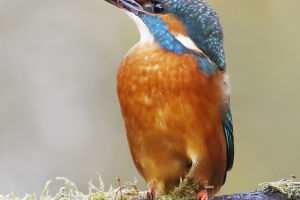Antelopes, the elegant and swift creatures of the African and Asian grasslands and wilderness, face constant threats from predators like lions, leopards, and hyenas.
To navigate and survive in such challenging environments, antelopes exhibit extraordinary abilities, including remarkable speed and powerful jumping prowess.
But what exactly enables them to excel in these aspects? Let's delve into the unique characteristics of their body structure and behavior.
Antelopes possess long legs and light bodies, facilitating rapid movement across diverse terrains. Their flexible hooves adapt seamlessly to various surfaces, whether it's the soft soil of deserts, the lush grasslands, or rocky landscapes. Notably, their hooves can separate and form a fan-shaped structure, enhancing grip on soft ground and preventing slips.
Antelopes boast robust hearts and lungs, ensuring sufficient oxygen and blood supply for sustained exertion. A specialized protein in their blood called myoglobin aids in storing and releasing oxygen during periods of heightened activity, helping maintain their athletic prowess.
In addition to their physical attributes, antelopes exhibit strategic behavioral habits to evade predators. When faced with danger, they don't immediately flee but instead observe the predator's movements, assessing the optimal direction and speed for escape. This approach conserves energy and time while minimizing risk.
Antelopes engage in "stotting," characterized by sporadic high jumps while running. Despite appearing energetically costly, stotting serves as a clever strategy. It signals the antelope's vitality and strength to predators, creating psychological pressure and dissuading pursuit.
Simultaneously, stotting provides a vantage point to survey surroundings, enabling informed decisions regarding obstacles, companions, and threats.
Antelopes' exceptional abilities notwithstanding, they are not alone in the animal kingdom in terms of speed and agility. Cheetahs, horses, and ostriches are among the notable contenders, each with distinct similarities and differences when compared to antelopes.
In terms of speed, cheetahs reign supreme as the fastest land animals, clocking speeds of up to 120 kilometers per hour, albeit for short bursts. Horses, renowned for their swiftness, can reach speeds of around 60 kilometers per hour and sustain it for longer durations.
Ostriches, the fastest birds, can dash at approximately 70 kilometers per hour, adeptly navigating uneven terrain.
While antelopes may not match the blistering pace of these animals, they can reach speeds of around 50 kilometers per hour, coupled with nimble maneuverability across various landscapes.
When it comes to jumping power, antelopes exhibit astounding prowess, capable of leaping up to 3 meters from a standstill or spanning a 4-meter-wide gully while in motion. Cheetahs, similarly robust jumpers, can vault over obstacles reaching heights of up to 2 meters in pursuit of prey.
In contrast, horses and ostriches rely more on their speed and endurance rather than their jumping ability to evade or pursue adversaries.
Antelopes' survival hinges on a combination of remarkable physical attributes and strategic behaviors honed over generations. Their agility, speed, and keen instincts enable them to thrive in the unforgiving grasslands, constantly evading the clutches of predators.
While other animals may surpass them in certain aspects, antelopes remain marvels of adaptation and resilience in their natural habitats.


